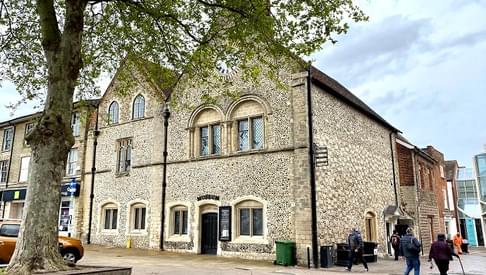
Back to Blogs
Discover
Bury St Edmunds Witch Trials
The history of Bury St Edmunds took a very dark turn between 1599 and 1694 when the Great Witch Craze swept through Europe and the European colonies in America leading to one of the largest witch trials in England in Bury St Edmunds.
The Witch Trials in Bury St Edmunds
The Witchfinder General
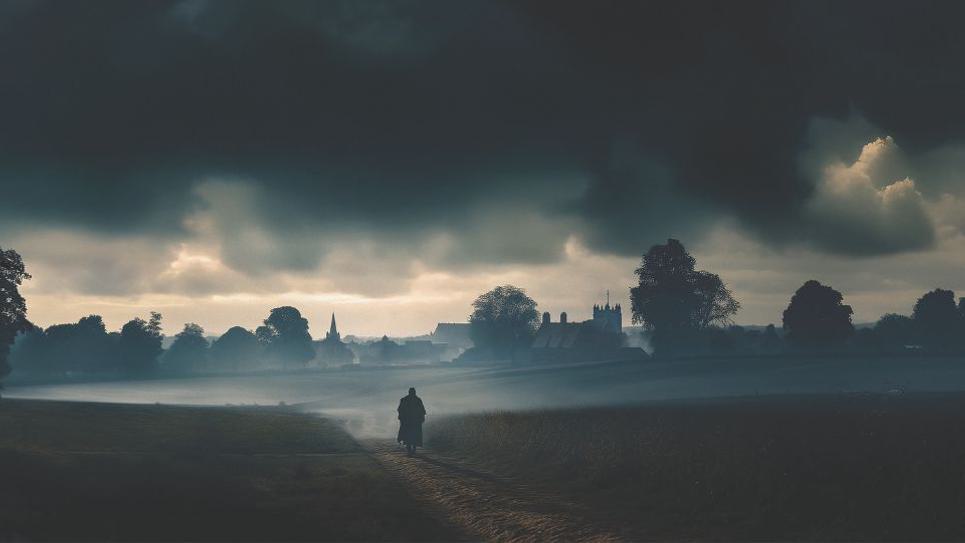
East Anglia became synonymous with witch hunts due to the presence of one of medieval history’s most notorious figures Matthew Hopkins - the self-styled 'Witchfinder General'.
As in Arthur Miller’s famous play, The Crucible, which give a dramatized version of the Salem Witch Trials in America where evidence from hysterical neighbours was used to send many innocent people to their graves, similar events happened in Suffolk but started much earlier.
East Anglia became synonymous with witch hunts due to the presence of one of medieval history’s most notorious figures Matthew Hopkins - the self-styled 'Witchfinder General'.
From each town he visited he received ample pay (his services in Stowmarket, Suffolk alone earned him over £3,300 in today’s money). The more witches he rooted out, tried and executed on the flimsiest of evidence, the more Hopkins grew rich. It's estimated Hopkins' work lead to around 100 executions across East Anglia.
Lesser known was his accomplice John Stearne. Stearne was known at various times as the witch-hunter, and "witch pricker". Stearne was raised in Long Melford and later became a land owner at Lawshall near Bury St Edmunds. Within a year of the death of Matthew Hopkins, John Stearne retired to his farm and wrote A Confirmation and Discovery of Witchcraft. He died in 1670.
Hopkins and Stearne's activities were heavily fictionalized in the 1968 horror film Witchfinder-General which was filmed in Lavenham among other locations in East Anglia.
The number of people in Suffolk accused of witchcraft varies but it is thought to be between 150 and 200.
1599 - The First Witch Trial in Bury St Edmunds

Bury St Edmunds Gaol as depicted in a c 1700 painting of the Market Square
Agnes Waterhouse was the first recorded woman to be executed for witchcraft in England in 1566. The first recorded account of a witch trial at Bury St Edmunds was in 1599 when Jone Jordan of Shadbrook (Stradbroke) and Joane Nayler were tried, but there is no record of the charges or verdicts. In the same year, Oliffe Bartham of Shadbrook was executed for "sending three toads to destroy the rest (sleep) of Joan Jordan".
The town's goal in those days was situated on the corner of Woolhall Street and Cornhill (where Paddy Power is today) and the trials were held at the Assizes in Raingate Street, in a building long since gone which is now the site of the Old Shire Hall and former Magistrate's Court near to the town's Premier Inn.
The executions were held on unconsecrated ground outside of the town at Thingoe Hill. Previous to this the place of execution in medieval times was at the Tay Fen, today's Tayfen.
1645 - 18 Executed in Bury St Edmunds in one of the largest witch trials in England

The Nutshell. Photo: Emily Fae
Two trials in Bury St Edmunds became historically well known.
In 1645, 16 women (Anne Alderman, Rebecca Morris, Mary Bacon, Mary Clowes, Sarah Spindler, Jane Linstead, Mary Everard, Mary Fuller, Susan Manners, Jane Rivet, Mary Skipper, Mary Smith, Margery Sparham, Katherine Tooly, Anne Leech and Anne Wright) and 2 men (Thomas Everard and John Lowes, the Vicar of Brandeston) were found guilty of witchcraft, all of them were from villages in the surrounding area.
The trial, facilitated by Witchfinder General Matthew Hopkins, saw all 18 executed in one day on August 27 1645. Up until then the biggest legal case had been the 11 Pendle Hill witches who were tried at Lancaster in 1612.
Accused Witches were taken to a building where The Nutshell pub is today and had their nails cut or locks of hair. The nails and hair were stored in brown jars in the basement as it was thought that if you were not whole when you died, you wouldn’t be able to come back as a whole witch in the next life!
Mummified cats, like the one you can see hanging above the bar in The Nutshell found during building work in 1935, were buried in the walls and roof cavities of houses during this time to ward off witches and evil spirits and if you find one, it’s meant to be bad luck to remove it.
1662 - The Bury St Edmunds Witch Trial that became a model for the Salem Witch Trials

A Tryal of Witches Book on Display at Moyes's Hall Museum in Bury St Edmunds
In 1662, two elderly widows, Rose Cullender and Amy Denny (her surname incorrectly spelt Duny in documents from the era), both living in the nearby town of Lowestoft were accused of witchcraft by their neighbours.
They were accused of causing a toad to fall out of a child’s blanket and then vanish with a hiss in the fire. Once suspicion of witchraft began, they were then accused of making Samuel Pacey’s children vomit pins and nails after he refused to sell them herrings; they were also “credited” with infesting another man with lice, causing a cart to collapse and a chimney to fall down, not to mention causing the deaths of local pigs, cattle and horses.
They were tried on 10 March 1662 at the Assizes at Bury St. Edmunds by one of England's most eminent judges of the time, the Lord Chief Baron of the Exchequer, Sir Matthew Hale, and the jury found them guilty on thirteen charges of using malevolent witchcraft.
The testimony of the philosopher, physician and author, Thomas Browne, probably helped in the conviction. They were sentenced to death and were hanged a week later on March 17 1662.
The trial in Bury St Edmunds had a powerful and tragic influence on the continuing persecution of witches in England and similar persecutions in the American colonies. The case became a model for, and was specifically referenced in, the Salem Witch Trials in Massachusetts, when the magistrates were looking for proof that "spectral evidence" (evidence based on dreams and visions) could be used in a court of law.
Unlike Salem, Massachusetts, the scene of perhaps the most infamous witch trials ever, there is no monument to the people who perished as a result of the Witch Trials in Bury St Edmunds. But the town does have a Salem Place in Kings Road, a lasting reminder of a dark period in history.
The End of The Witch Trials

The last witch trial at Bury St. Edmunds was in 1694, when Lord Chief Justice Sir John Holt forced the acquittal of Mother Munnings of Hartis (Hartest) on charges of prognostications causing death. The chief charge was 17 years old, and the second was brought by a man on his way home from an alehouse.
After just three years, Matthew Hopkins retired as Witchfinder General. He moved back to Manningtree, and before the year ended had died of supposed tuberculosis. But his disturbing legacy lived on with his book ‘The Discovery of Witches’ providing a blueprint for further persecution of witches over the next hundred years. Hopkins has seeped into popular culture in the form of numerous heavy metal songs and the 1968 Hammer movie Witchfinder General which was filmed in Suffolk including Lavenham and starred Vincent Price.
Mary Hicks is believed to have been last woman executed for witchcraft in Huntingdon under the Witchcraft Act in 1716 along with her nine-year-old daughter, Elizabeth Hicks.
Visit Moyse's Hall Museum to Find Out More

Witchcraft Exhibit at Moyse's Hall Museum. Photo: Phil Morley
To find out more about the Bury St Edmunds Witch Trials along with superstitions in the town and East Anglia visit Moyse’s Hall Museum.
The museum is housed in a beautiful medieval landmark 12th Century building and its rich and varied past has included serving as the town's Bridewell, workhouse, and police station, first opening as a museum in 1899.
Moyse's Hall Museum houses a collection of witchcraft artefacts which includes a rare 17th century Elder Wand (in the Harry Potter novels, the Elder Wand was considered the most powerful wand of all), a witch’s puppet, along with mummified cats, child and adult shoes, which were bricked up in the walls of Suffolk properties to keep witches and evil spirits away.
If you enjoy horrible histories then Moyse's Hall Museum is a must with its 'Terrible Tales' theme and stories written by Horrible Histories Author Terry Deary. Terry brings to life some of Bury St Edmunds more gruesome tales, especially for children. plus there are some great hands on exhibits.
Step into a gibbet cage, hold a real Norman sword and try out a ball and chain for size!
Discover more at Moyse's Hall Museum website.
The Witchfinder General Film

Little Hall Lavenham
The 1968 film 'The Witchfinder General', starring film legend Vincent Price was shot in and around Suffolk.
Set in the English Civil War, it follows the self-appointed Witchfinder General, Mathew Hopkins, as he accuses and persecutes innocent women of being witches in a heavily fictionalised account.
The film directed by Michael Reeves on a budget of under £100,000 eventually became a cult film hit.
Scenes from 'The Witchfinder General' were filmed at Lavenham Market Square outside the Lavenham Guildhall, Little Hall in Lavenham and Kentwell Hall in Long Melford. The interiors were filmed in two specially converted aircraft hangars near Bury St Edmunds and the cast and crew stayed at The Angel Hotel.
Related Posts

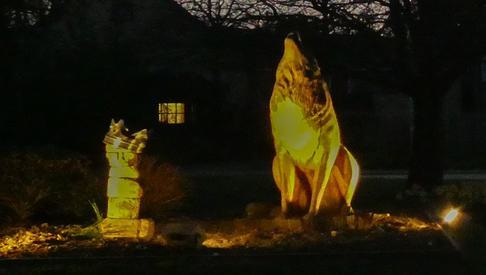
Spooky Legends of Bury St Edmunds and Beyond
With a 1000 year history, Bury St Edmunds & Beyond is…
View More
Harry Potter Fans Will Enjoy the Magic of…
Check out our guide to a magical stay in Bury St…
View More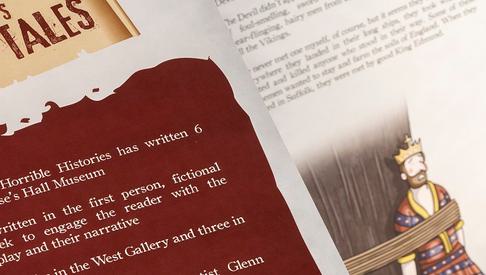
Horrible Histories Creator Brings Terrible…
Horrible Histories creator Terry Deary has helped…
View More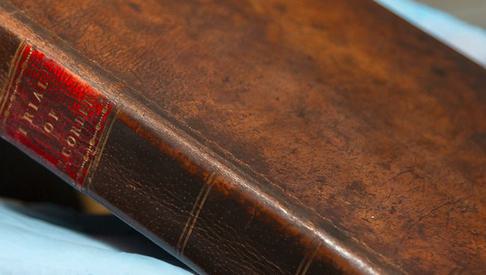
Bury St Edmunds' Horrible Histories!
Discover the gruesome tales in Bury St Edmunds' murky…
View More
5 Spooky Objects at Moyse's Hall Museum
A book bound in skin, mummified cats, wolf skulls and…
View MoreThings To Do
Related Blogs

News
Bury Tour Guides to launch…
Bury St Edmunds Tour Guides to Introduce new tours in…

News
Town’s Museum Forms New…
Moyse’s Hall Museum will be forging links with a…

News
St Edmundsbury Cathedral…
St Edmundsbury Cathedral in Bury St Edmunds is…
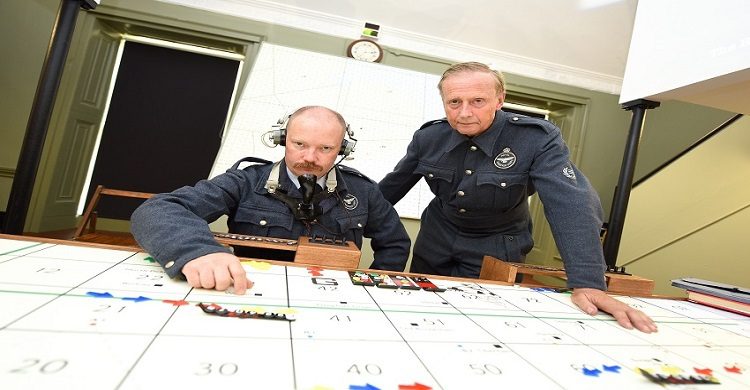
News
Bury St Edmunds & Beyond…
Step inside many of Bury St Edmunds historic buildings…

News
Bury's Best Pubs with a Past
some notable, historic and somewhat quirky pubs and…
Latest news

News
How to Spend Betwixtmas in Bury St Edmunds & Beyond
The post Christmas period is the perfect time to get out and about before the new year kicks in, and you’ll find plenty of activities and places to visit in Bury St Edmunds and beyond.

News
Parents Guide to Pre Christmas Entertainment
It's the school holidays and with Christmas just around the corner we've put toegther a guide on places to take the kids to keep them entertained until Santa visits!

News
Enjoy a Festive Afternoon Tea in 2025
Celebrate the Christmas season with a festive afternoon tea in Bury St Edmunds & Beyond...

News
Festive Winter Walks
Get outside and enjoy the fresh crisp winter air with one of these walks in Bury St Edmunds and Beyond!

News
Bury Tour Guides to launch new tours next year after successful 2025
Bury St Edmunds Tour Guides to Introduce new tours in 2026 and continue the successful Food and Drink Tours!

News
New in Bury St Edmunds For 2026
A sneak peak into new attractions visitors can enjoy in Bury St Edmunds in 2026.

News
Baby It's Cold Outside... Things To Do When the Weather Turns Frosty
Just because the temperature’s dropped doesn’t mean the fun has to! If you’re visiting town during the chillier months, there’s still plenty to see, do, and experience.

News
Places to sit by a roaring fire in Bury St Edmunds & Beyond
Warm up by a roaring fire this winter in Bury St Edmunds & Beyond...

News
Christmas Park and Walk 2025
Additional parking has been provided by West Suffolk Council in partnership with Greene King this Christmas.
